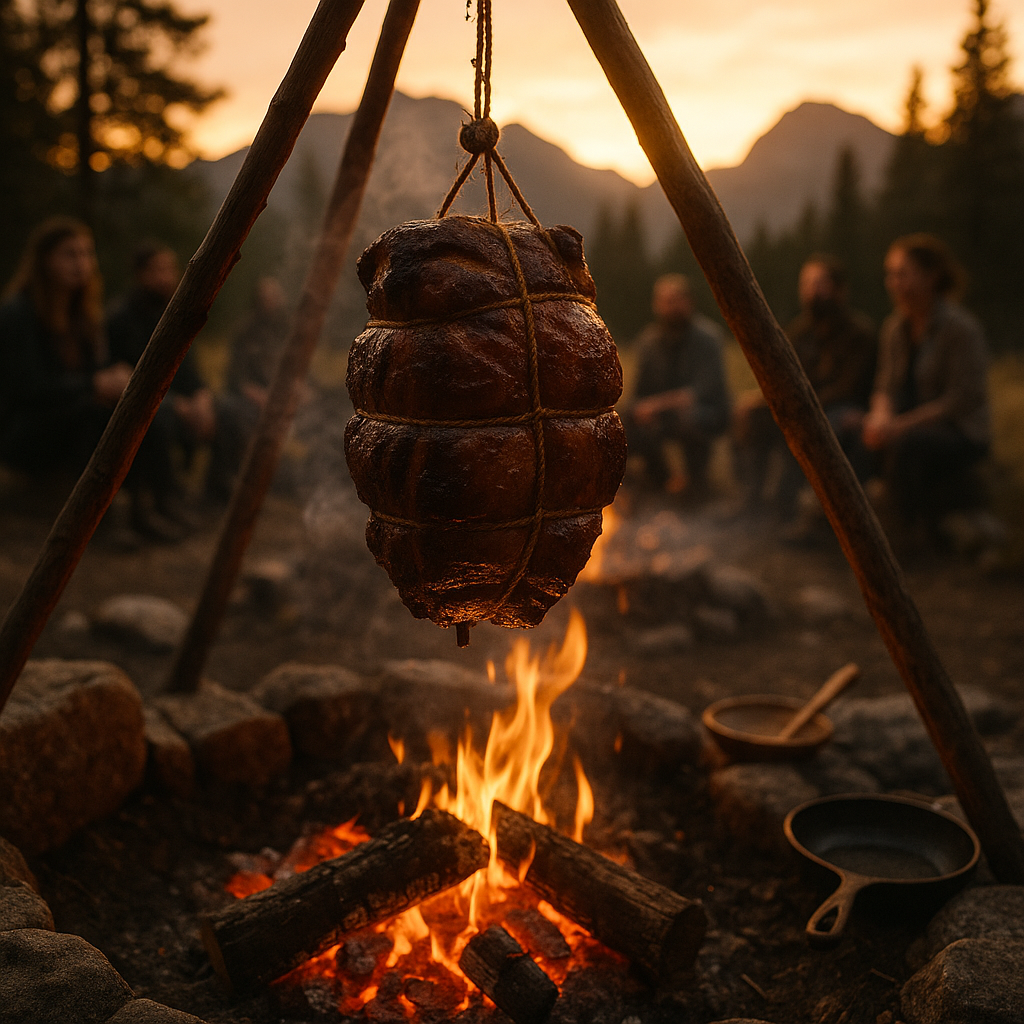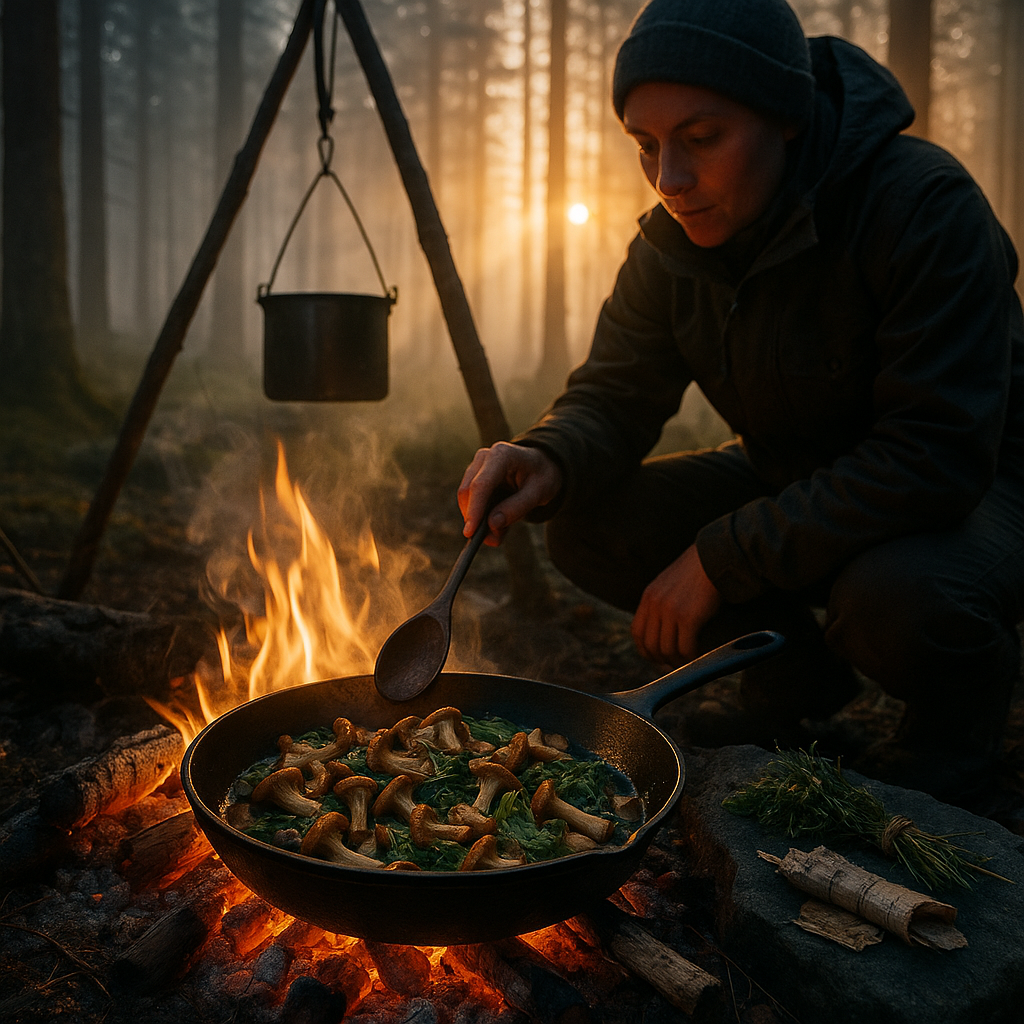Key Takeaways
- Nature-inspired cooking reduces energy waste. Primitive techniques, such as clay pot cooking or using heated stones, distribute heat more sustainably than many modern methods and lower overall energy consumption.
- Clay and stone tools champion zero-waste living. Made from biodegradable and reusable materials, these natural implements provide eco-friendly alternatives to single-use or synthetic cookware across diverse environments.
- Cooking with leaves embodies sustainable resourcefulness. Traditional methods using leaves as wraps or steam envelopes eliminate the need for foil, plastic, or extra cookware, all while infusing food with earthy, natural flavors.
- Ancient methods align with modern sustainability goals. Practices like friction fire-making, clay oven baking, and stone heating highlight resourceful strategies to reduce environmental impact, providing inspiration for today’s green-minded cooks.
- Crafting tools deepens connections to the environment. The process of decorating clay pots or handcrafting stone tools fosters patience, creativity, and a greater appreciation for the natural materials shaping our meals.
- Primitive cooking encourages mindfulness through process. Slow, deliberate techniques focus attention on the sounds, scents, and textures of food preparation, promoting a thoughtful connection to nourishment and the cycles of nature.
- Ancient knowledge offers modern resilience skills. Beyond cooking, learning bushcraft and traditional skills helps individuals adapt sustainably amid changing ecological and societal conditions, a vital asset for the future.
These ancient practices offer more than a glimpse into our heritage. They illuminate a pathway toward mindful, sustainable living. As you delve deeper, you’ll discover how to adapt these enduring techniques to contemporary kitchens and everyday life.
Introduction
Imagine a meal shaped by earth and flame: cookware sculpted from clay beneath your feet, flavors tucked into leaves and roasted over smoldering stones. Here, the act of cooking is transformed through ancient ingenuity, each dish resonating with the textures of the wild and the warmth of fire. Primitive tools are not mere relics of survival. They are living blueprints for a more mindful and sustainable way to prepare food, revealing lessons in resourcefulness and reverence too often overlooked in modern kitchens.
By rediscovering ancestral methods such as shaping clay pots, heating river stones for roasting, or wrapping food in layers of fragrant leaves, we invite ourselves to slow down and embrace simplicity. These intentional practices reduce waste and open up a world of eco-friendly living, deeply connected to people and place. With every handcrafted tool, every elemental ritual, we honor traditions that continue to nurture body, spirit, and landscape.
This journey reveals how reimagining primitive tools for today’s kitchen can cultivate joy, foster sustainability, and awaken a renewed kinship with the land.
Stay Sharp. Stay Ahead.
Join our Telegram Channel for exclusive content, real insights,
engage with us and other members and get access to
insider updates, early news and top insights.
 Join the Channel
Join the Channel
Rediscovering Primitive Cooking
Across continents and centuries, ancient civilizations crafted intricate cooking methods rooted in their natural surroundings. Their techniques were never solely about survival; they reflected a nuanced grasp of thermal dynamics and the intrinsic properties of earth, stone, and plant, wisdom that modern science is only now beginning to unpack.
Fire formed the heart of these systems. Traditional fire-starting techniques (like the bow drill and hand drill) demanded skill and focus, inviting the cook into an intimate dialogue with the environment. The sharp scent of cedar igniting under gentle hands, the rhythmic strike of stone against steel, and the illumination of flame flickering over stonework all immerse the senses in the ritual, igniting a connection far deeper than any digital device.
Natural materials shaped the technology of ancient kitchens. Certain stones, when properly heated, retained stable temperatures for hours, enabling slow roasting and boiling with minimal fuel. Carefully selected clay, blended for resiliency and heat tolerance, yielded vessels that not only withstood open flames but often enhanced the taste and mineral content of the meal itself. These were not primitive stopgaps. Rather, they were elegant, eco-harmonious solutions developed through centuries of trial, observation, and artistry.
Today, these methods and the underlying ingenuity that created them are being explored anew, offering relevant models for those seeking to live and cook more sustainably in any context.
Crafting and Using Traditional Cooking Tools
Bringing these age-old practices into the present begins with understanding and appreciating the tools themselves. Each vessel, stone, and leaf carries a story, blending function with artistry and a deep respect for the surrounding ecosystem.
Clay Vessels and Earth Ovens
Clay vessel crafting represents one of humanity’s most inspiring culinary innovations. For example, the Pueblo peoples of the American Southwest mastered the use of micaceous clay, whose sparkling minerals allowed pots to be placed directly on fire, improving both durability and the nutritional content of the food within. These pots often grow stronger and more nuanced with every use, standing in stark contrast to mass-produced, throwaway cookware.
Across the Pacific Islands, sophisticated earth ovens remain central to ceremonial and daily life. Research shows these ovens can hold optimal cooking temperatures for up to 72 hours, using up to 70% less fuel than many modern appliances. The method involves layering preheated stones with moisture-rich leaves and then sealing ingredients inside natural chambers created from earth and plant materials. As steam and radiant heat envelop the food, vegetables and meats emerge tender and deeply flavored, showcasing a harmony of science and nature.
Beyond North America and Oceania, similar earth oven traditions appear in South America (such as the Peruvian pachamanca) and the Middle East’s zarb, each adapted to local resources and ingredients.
Stone Tools and Cooking Surfaces
Stones such as granite and basalt have long been favored for their ability to absorb, hold, and evenly distribute heat. From the mountain villages of the Andes to Southeast Asian riverbanks, cooks have used heated stones for roasting, steaming, and baking. In Laos, for instance, families create perfectly steamed rice by heating smooth river stones, conserving both fuel and water. Stones also became versatile griddles for baking bread, searing fish, or slow-roasting root vegetables.
In regions as diverse as Scandinavia and the Pacific Northwest, stone-boiling, a method where heated stones are dropped into water-filled troughs or baskets, helped people cook without clay vessels. These techniques underscore the adaptability and ingenuity woven through indigenous culinary traditions.
Leaf-Based Cooking Methods
Leaves have long served as nature’s cookware, their sturdy, moisture-laden surfaces acting as both protective wrapping and flavor infuser. In Southeast Asia, banana and pandan leaves frequently enclose sticky rice or fish, imparting subtle aromas and keeping food moist. Mesoamerican cultures utilize corn husks for tamales, while in South India, jackfruit or turmeric leaves add color and spice to rice and curries.
The advantages of leaf-based cooking stretch across continents:
- Leaves impart unique, region-specific flavors that enhance the final dish.
- They create natural steam pouches, allowing for gentle, even cooking.
- All wrappings are fully biodegradable, supporting closed-loop sustainability.
- The process eliminates reliance on synthetic packaging or metals, reducing environmental impact.
Such methods are seen in Mediterranean grape leaf dolmas, Pacific salmon cooked in cedar wraps, and African foods steamed in plantain leaves, demonstrating their global reach and adaptation.
Environmental Benefits
The environmental advantages of primitive cooking tools are multifaceted, going well beyond mere biodegradability. Studies indicate that traditional cooking methods can shrink a household’s carbon footprint by as much as 60% compared to electric or gas appliances, offering a viable blueprint for sustainable living in both rural and urban contexts.
Resource Conservation
- Zero electricity or fossil fuel dependence makes these methods accessible, even off the grid or during power outages.
- Minimal water usage compared to boiling or simmering in open cookware.
- Tools are often multi-purpose (stones used for both cooking and heating; clay pots repurposed for storage).
- Natural materials like clay and stone hold heat effectively, maintaining temperature longer and reducing fuel needs.
These principles extend into healthcare, where clay pots are still used in parts of Africa and Asia to sterilize water and prepare herbal remedies without synthetic chemicals. In education, traditional cooking projects inspire students to consider scientific principles and environmental stewardship, while in environmental science, researchers model thermal efficiency in primitive ovens to design cutting-edge, energy-saving cookstoves.
Waste Reduction
Primitive cooking traditions exemplify zero-waste philosophy. Everything, from clay shards to charred leaves, returns to the earth, feeding the soil instead of overflowing landfills. Case studies from indigenous communities in the Amazon and Arctic show that these practices routinely generate up to 90% less solid waste than conventional kitchen operations. The closed-loop cycle also reduces reliance on packaging, plastics, and synthetic materials.
Stay Sharp. Stay Ahead.
Join our Telegram Channel for exclusive content, real insights,
engage with us and other members and get access to
insider updates, early news and top insights.
 Join the Channel
Join the Channel
Integrating Primitive Tools in Contemporary Kitchens
You can bring the satisfaction and eco-friendly innovation of these ancestral methods into





Leave a Reply